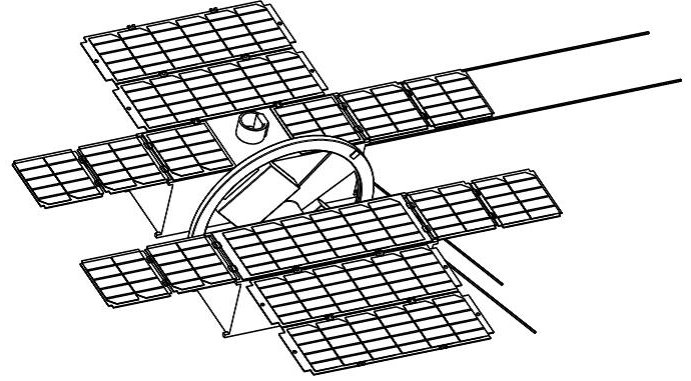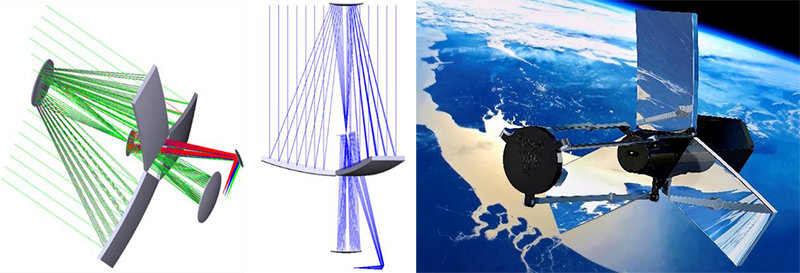ADCS/GNC
With the advancement of miniaturized payloads and associated pointing requirements and innovative system concepts, such as formation flying, rendezvous & docking, intersatellite communication, the requirements on Attitude Determination and Control Subsystem (ADCS) of spacecraft become increasingly more stringent. The required accuracy of sensors and actuators, dropping to arcminutes or even arcseconds for small satellites, poses interesting engineering challenges. Moreover, jitter caused by micro-vibrations in the spacecraft is an emerging issue to be tackled.
Guidance, Navigation and Control (GNC) are fundamental for satellites to determine their position and trajectory and to determine their future course. Thanks to the increase in on-board computational capabilities, autonomous navigation, once considered impossible, is becoming a fundamental enabler for missions. Autonomy requires both on-board position and trajectory determination capabilities but also computations to determine corrections (control) and reach the desired target (guidance), being it another satellite for rendezvous or a celestial body for a fly-by or even landing.
At SSE we perform analysis on the impact and requirements of attitude determination and control in relation to specific mission objectives. Also, we perform development of sensors and actuators, with a focus on innovative technical solutions for further miniaturization and solving jitter problems in actuators or at system level.
Our team has been involved in several international projects to advance autonomy in navigation, ranging from Low Earth to applications in deep space. We contributed to defining new mission concepts, proposing new measurement concepts and implementing demonstrators to verify their performances: these activities have contributed to several ESA missions currently in development.
Earth observation, space exploration and communication are relevant societal applications of space missions. Advancement of ADCS for small satellites is required to facilitate state-of-the-art payloads such laser satellite communication terminals and optical instruments to be able to point them accurately as sufficiently stable to their targets.
Satellite formations can observe phenomena from multiple points of view, for example helping to locate radio emitters such as illegal fishing boats from space. Autonomy will enable such formations to grow and tackle more complex problems by providing insights directly to Earth, reducing response time and overall mission cost. Far from Earth, autonomous missions can act as scouts monitoring potentially dangerous phenomena such as meteoroids impacting the far side of the Moon, protecting future human explorers.
At SSE, we have experience with ADCS development for the successful Delfi-C3, Delfi-n3Xt and Delfi-PQ missions. At present, algorithms, sensors and actuators are being developed for the follow-up PocketQube mission. Magnetometers, magnetorquers and a reaction wheel already have been prototyped for this purpose. This will soon be complemented with an Earth or sun sensor.
Our team has also contributed significantly to the LUMIO mission, which will protect future explorers on the Lunar surface by monitoring meteoroid showers: autonomy could allow the mission to perform its task with no human support.
But satellite operators managing large formations in Low-Earth Orbit benefit also from autonomous navigation capabilities, as they would be able to monitor and manage larger fleets with lower effort seamlessly. At the same time, scientists interested in investigating celestial bodies find autonomous navigation a key requirement for their missions because of the long travel times of signals to operate these spacecrafts.
Will we be able to send an autonomous probe in the Solar System, coming back with incredible observations without having had contact with Earth for 20 years? Dreams like this can become reality enabled by autonomous navigation.


-
- Attitude Control of the Delfi-n3Xt Satellite
- Design, integration, and testing of world's smallest satellite reaction wheel
- Autonomous navigation for deep space small satellites: Scientific and technological advances
- Performance analysis of crosslink radiometric measurement based autonomous orbit determination for cislunar small satellite formations
- Autonomous Navigation Performance of Cislunar Orbits considering High Crosslink Measurement Errors
- Combined optical line-of-sight and crosslink radiometric navigation for distributed deep-space systems
- LUMIO: A CubeSat for observing and characterizing micro-meteoroid impacts on the Lunar far side
- LUMIO: A CubeSat to Monitor Micro-meteroid Impacts on the Lunar Farside
- Autonomous Crosslink Radionavigation for a Lunar CubeSat Mission
- LUMIO: An Autonomous CubeSat for Lunar Exploration
- Overview of Space-Capable Global Navigation Satellite Systems Receivers: Heritage, Status and the Trend towards Miniaturization
- Software-defined testbed for next generation navigation transponders
- Particle Swarm Optimization Based Tracking Window Planning for Cislunar Orbiters Performing Autonomous Radiometric Navigation
- Designing the Radio Link for a Lunar CubeSat
Contact

Dr. J. (Jian) Guo
Associate Professor
✉ J.Guo@tudelft.nl